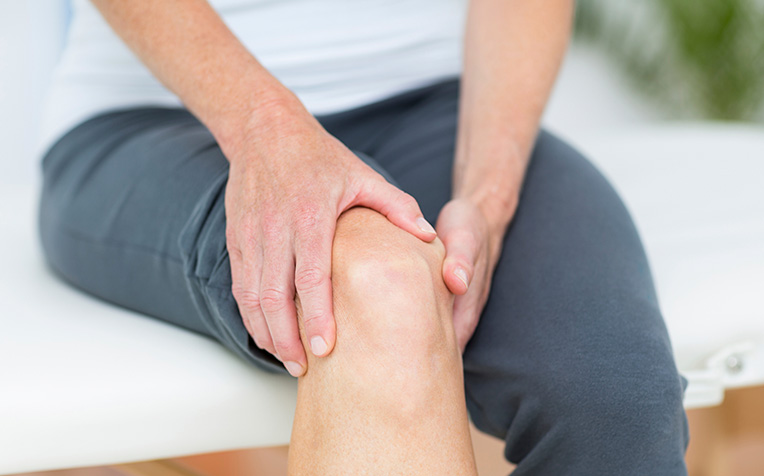How To Recover Fast From Ligament Injury?
Ligaments are the fibrous band that connects one bone to another around a particular joint. A form of connective tissue we can say, and they are fibrous in structure but a little bit elastic too. So when mild stretch is applied, it can return to its original position holding the joint firmly.
Hence they are meant for control mobility and they stabilize the joint otherwise.
But if the ligaments are stretched beyond a particular limit, they fail to return to their normal position leading to torn ligaments.
Rupture or tear in ligament is usually called as a sprain.

How Ligament Gets Injured?
Athletic activities are the most common reason for ligament injury, it can be any sports activities involving sudden impact or landing where body is forced out of its normal position. Though ligaments may get injured in vehicular accidents or with general wear and tear also. It may occur when a person falls and the joint is twisted or with landing awkwardly.
What Happens When Ligaments Are Damaged?
After a trauma, most commonly in contact sports like football, boxing, gymnastics, karate, volleyball, etc., where sudden impacts are common and sometimes joints are twisted, following symptoms indicates a sprain.
There may be
- Pain and swelling around a particular joint
- Instability of joint or excessive motion in case of complete tear
- Balance would be affected if injury in lower limb
- Pain and swelling leads to decreased in range of motion
With chronic instability the individual may have difficulty in walking or running on uneven surfaces or may fall frequently.
The pain and severity depends on the severity of injury:
GRADE 1: Mild tear
GRADE 2: Moderate tear
GRADE 3: Complete tear
Do Ligaments Heal Completely And Naturally?
Healing depends on the severity.
With mild damage recovery time is short and with more damage, it is generally long. But with complete tear surgery is required to get back the joint stability.
Ligament healing is usually slow and sometimes if the damage is more, it is incomplete. Joint instability caused by ligament injury improves gradually after 6 weeks to a year. In most of the patients, instability remains even after a year.
If you damaged your ligament less severely or with mild tear as with just a mild twist, it heals with proper care and treatment.
If the damage is moderate, injured part forms scar tissue that is less elastic, so back to normal elasticity is not possible. But still movements are near to normal and stability could be achieved by proper strengthening exercises.
And with the complete tear, surgery is required for reattachment. As ligaments do not grow back, they can only be repaired.
While exercises are performed for muscle strength, it stimulates the ligaments also to become stronger and to grow in thickness. But as already discussed, ligaments do have poor blood supply. So they are metabolically less active than the muscle. Hence it takes time to increase its strength with regular training.
Controlled early resumption of activity can stimulate repair and restoration of function.
So the primary care of any injury includes:
- Rest: Resting the injured part will help in healing faster, if rest is not given and movements are done even after, it damages the injured area further.
- Ice: Ice application is mandatory to such injuries, as it decreases the swelling and inflammation.
- Compression: Apply compression bandage to the injured area, it supports the joint and reduces the swelling as well.
- Elevation: Raising the injured area will assist in draining the swelling faster, thus reducing pain.
Healing of ligaments usually takes longer than the bone healing. This is because bones have plenty of blood supply. so all the minerals and nutrients necessary for healing are in profuse supply. Where as in ligaments blood supply is poor, so healing is poor and it takes long time to heal. Sometimes healing doesn’t occur at all, if tear is complete.
Researches show that to support the adaptive strength and size of muscles with resistance training (strengthening exercises), tensile strength of tendons and ligaments also improves.
Eccentric resistance training improves strength of ligaments more rapidly.
Eccentric training is lengthening a muscle under load.
For the rapid recovery:
- Immediately after injury, rest should be given to the part for a week or so.
Elevating the part and ice application
- As the swelling subsides, gradual movements with care should be started to maintain the joint mobility.
- Later on strengthening exercises are to be performed.
In case of sports person, rest is not possible. Joint is stabilized with the brace and guarded movements are carried out.
Most commonly injured ligaments are that of ankle and knee. So with reference to this, treatment plan will follow a period of rest as discussed earlier.
Followed by gradual movements of knee (knee bending and straightening).
Strengthening exercises includes close- chain exercises (squats, lunges) and open-chain exercises (knee extension with a sand bag)
Vigorous exercises are to be done to improve the strength, as the stronger the muscles are the more stable the joint. As muscle becomes stronger, they prevent rubbing of bones hence minimizing chances of arthritis that can follow the injury

